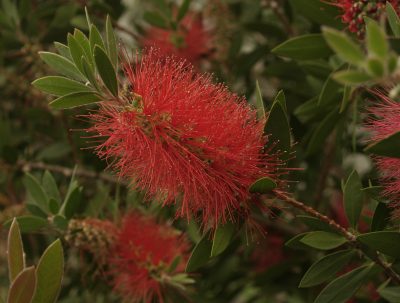How can I propagate rosemary?
Our Facebook friend Cheryl noted that her prostrate rosemary has rooted several new plants. So, she asks, can she propagate cuttings, too? She’d seen online that you can root it in water.
Here’s how to propagate your rosemary:
It’s one of the easiest plants to propagate, especially from soft wood cuttings. In the spring, once stems start to elongate, take tip cuttings about 6″ long. Be sure to cut a new stem, which will be green and growing, and not woody yet.
Remove the leaves on the lower inch of the cuttings by simply rubbing them against the grain. Then stick the cuttings in a small container of potting soil, up to the point where the lowest leaves are just on the surface, not below the soil level.
Keep the potting soil moist, but not too wet, and the cuttings should root in about a month. If you pull slightly on the cuttings and they move, no roots have been formed yet. But if you encounter resistance, roots are starting to grow and the process is going smoothly.
After a couple more weeks you can dump the container out and separate the cuttings, then plant them wherever you want.
For most plants, rooting in soil is much better than rooting in water. Roots that are developed in water function much differently than roots formed in soil. So if you want to eventually transfer your cutting to soil, it’s better to root it in soil to start with.
If rooted in water, once the cuttings are moved to soil, entirely new roots will need to be formed, since the water-grown roots will not function properly in their new environment.

 Heather Ginsburg
Heather Ginsburg Janet Rademacher
Janet Rademacher Daphne Richards
Daphne Richards
 Trisha Shirey
Trisha Shirey